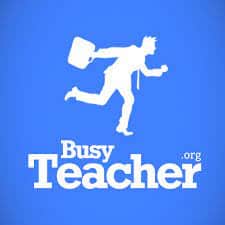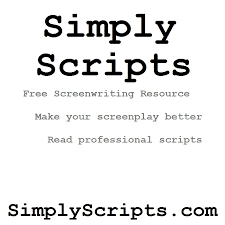
How to Teach English With Dialogues
For many ESL students, putting what they’ve learned about English into practice can be a major challenge. The moment they’re asked a question in English that requires an answer more substantial than “yes” or “no,” they freeze up.
That’s why you should be teaching English with dialogues.
Dialogues are like conversational training wheels. They give your students an opportunity to practice speaking in English and responding to various real-life scenarios they’ll encounter in English-speaking countries—minus the stress of having to rapidly come up with the words themselves.
In this post, I’ll give you activities for students of all levels plus unique dialogue resources. They’ll help your students speak more confidently the next time they need to use their own words in English.
Contents
Download: This blog post is available as a convenient and portable PDF that you can take anywhere. Click here to get a copy. (Download)
How to Teach With Dialogue in the ESL Classroom
Use Guided Role-playing
Guided role-playing is where your students read complete and ready-made dialogues together. While students of all skill levels can benefit from this type of role-playing, it’s best suited for beginners who don’t yet have the skill level to come up with their own sentences and actions.
This activity is quite simple:
- Assign students different parts of a dialogue.
- Have them read their parts out loud.
- Follow along to help with pronunciation, work through errors and answer questions.
- As students get more comfortable, encourage them to “act out” their scripts, adding emotion to match the words.
Here are some tips to make the most of this exercise:
- Make sure everyone gets a chance to speak and practice enough lines. To this end, try to choose relatively short dialogues, and make sure every student gets a chance to role-play.
- Choose dialogues based on the subject material, vocabulary or grammar covered in your textbook curriculum. If you’re not using a textbook, use your students’ particular weak points to help you determine how to choose a dialogue. For example, if they’re struggling with past tenses, use a script with people talking about what they did yesterday.
- Over time, try throwing in some unscripted material to test their speaking abilities and help them prepare for conversations outside of the classroom. This style of role-playing is great for intermediate and advanced students, because it requires them to use the English they already know in order to express themselves. So, not only are they practicing their speaking skills, but they’re also learning how to use their own language resources to communicate with each other.
Create Dialogue Gap Fills
Think of this activity like a Mad Libs game targeted directly at your lesson of the day.
Here’s how it goes:
- Erase key parts of your dialogue to create gaps that students will later fill in (hence the name gap fill). If possible, make sure that what you choose to blank out is relevant to your lesson. For example, if you’re studying actions, remove all of the action verbs from the dialogue, and have your students fill in the blanks using a word key.
- In class, hand out your blanked dialogues, and have students work independently or in small groups to fill in what’s missing. They don’t have to guess exactly the words or phrases you removed, but their input should be grammatically sound and demonstrate that they understand the context of the dialogue.
Put Together Comprehension Worksheets
The good thing about worksheet activities is that you can adapt them to any skill level depending on the questions or conversation prompts. And with dialogues, you can create a worksheet that targets both listening and reading comprehension.
To execute this activity:
- Craft an audio version of your dialogue. You can get your audio from these real English conversation resources or from short clips on YouTube. You can also just record yourself and a colleague speaking any dialogue you like.
- Create a transcript of the audio. If this is too time-consuming, you can always look for audio files or videos with transcripts from the resources I just mentioned above.
- Play the audio for the class, then have your students complete a series of listening comprehension questions on what they just heard without letting them read the transcript. Your questions can cover the plot, characters, setting and other important details.
- Hand out the printed version of the transcript, and have students correct their own responses on a separate sheet of paper. This way, you can assess both their initial listening comprehension and their reading comprehension.
Craft Scripted Puzzles
Another fun activity that works with all skill levels is the scripted puzzle exercise. It goes like this:
- Write parts of a dialogue on pieces of paper.
- Mix the papers up so that the script is out of order.
- Have the students work in a group to piece the script together in its correct order.
This activity is good for testing your students’ reading skills while giving them conversational English practice as they work together to construct the script. And since students need to use context clues to determine if the script is correct or not, you get to assess their general English knowledge as well.
Where to Get English Dialogues for Your Classroom
TeachingEnglish Dialogues
TeachingEnglish is run by the British Council, which means that every dialogue has been carefully created by a team of experienced ESL teachers.
Here, you can download the script and accompanying audio clip of two dialogues. The vocabulary presented in each dialogue is designed for beginner students, but the natural conversation of the audio clips can also make for great listening as far as intermediate learners are concerned.
If you’re looking for even more dialogues and lesson ideas, be sure to check out the lesson plans available on the site. These are broken down into three sections: lessons for children, lessons for teens and lessons for adults.
ThoughtCo Reading Comprehension Dialogues
ThoughtCo has one of the most comprehensive lists of scripts designed for teaching English with dialogues. What makes this website particularly great is that some of the scripts are arranged by skill level for your convenience.
Each dialogue covers a different topic that students need to know when living in an English-speaking country, like working in the office or talking about the weather. There are also dialogues for specialized vocabulary like medical English, business English and more.
BusyTeacher’s Role-playing Guide
BusyTeacher is home to a number of great ideas and activities for the ESL classroom, so it should come as no surprise that their dialogue resources are top-notch.
Their role-playing section offers hundreds of dialogues for students of all levels, as well as mixed-level activities that can be adapted to every classroom. Additionally, most of these dialogues come with vocabulary words, reading exercises and other forms of assessment to help your students learn new information as they practice their dialogues.
SimplyScripts
Simply Scripts offers scripts from movies, TV shows and radio shows, and makes a nice DIY source for authentic dialogues that you can adapt to your classroom.
All you need to do is choose what script you want to download, cut and paste the excerpts you want to use in class and design a lesson around that.
It’s a quick, easy way to come up with dialogues that’ll hold your students’ attention.
“Drills, Dialogues and Role Plays”
“Drills, Dialogues and Role Plays” is a free teacher’s guide filled with ideas on how to teach dialogue in a way that can help your students improve their listening, speaking and reading comprehension.
Whether you’re new to teaching ESL or you’re an experienced veteran who needs a little inspiration for role-playing activities, this text can help.
The best part about teaching English with dialogues is that students are able to take a break from the usual learning exercises, and practice the language in a way that maximizes engagement. To get the most out of this, make sure to capitalize on your students’ creativity and encourage them to play around and enjoy themselves while conducting the activity.
Now that you know how to teach dialogue to ESL students, take advantage of the resources above and have fun!
Download: This blog post is available as a convenient and portable PDF that you can take anywhere. Click here to get a copy. (Download)






